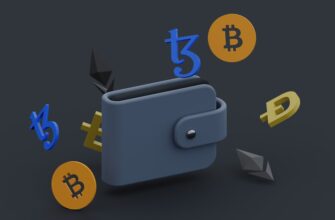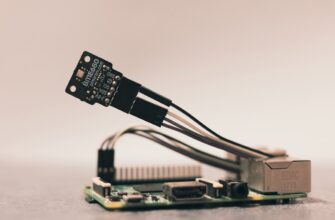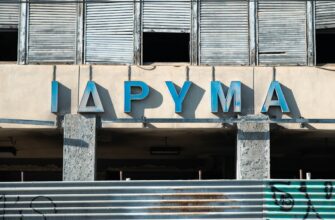- What is Bitcoin Halving?
- Why the Bitcoin Halving Countdown Matters
- Current Countdown: How Long Until the Next Bitcoin Halving?
- How to Track the Bitcoin Halving Countdown Accurately
- Historical Impact of Bitcoin Halvings: Lessons Learned
- Preparing for the 2024 Halving: A Practical Checklist
- Bitcoin Halving Countdown FAQ
What is Bitcoin Halving?
Bitcoin halving is a pre-programmed event in Bitcoin’s code that slashes the reward miners receive for validating transactions by 50%. Occurring roughly every four years (or after 210,000 blocks are mined), it’s Bitcoin’s built-in mechanism to control inflation and mimic the scarcity of precious metals like gold. With only 21 million BTC ever to exist, halvings gradually reduce new supply until the last coin is mined around 2140. This event is pivotal for investors, miners, and the crypto ecosystem, often triggering significant market shifts.
Why the Bitcoin Halving Countdown Matters
Tracking the halving countdown isn’t just a timer—it’s a strategic tool for navigating crypto markets. Here’s why:
- Supply Shock: Reduced mining rewards mean fewer new BTC enter circulation, potentially driving up prices if demand holds.
- Historical Precedent: Past halvings (2012, 2016, 2020) preceded massive bull runs, though results aren’t guaranteed.
- Miner Economics Halvings squeeze miner profits, forcing efficiency upgrades or shutdowns, which can affect network security.
- Investor Sentiment: Anticipation often fuels speculation, increasing volatility and trading volume.
Current Countdown: How Long Until the Next Bitcoin Halving?
As of late 2023, the next Bitcoin halving is projected for April 2024. Based on block production rates, estimates suggest it will occur around April 18-20, 2024. This places it roughly 4-6 months away at the time of writing. However, exact timing depends on mining activity—faster block validation could move the date forward, while slower speeds might delay it. For real-time tracking, use trusted countdown tools (see next section). After this event, miner rewards will drop from 6.25 BTC to 3.125 BTC per block.
How to Track the Bitcoin Halving Countdown Accurately
Don’t rely on guesswork! Use these resources for precise updates:
- Blockchain Explorers: Sites like Blockchain.com or Blockstream show real-time block height. Subtract the current block from 840,000 (the next halving block) to gauge progress.
- Dedicated Countdown Sites: Platforms like BitcoinHalving.com or Buy Bitcoin Worldwide offer user-friendly timers with daily adjustments.
- APIs & Developer Tools: For automated tracking, leverage APIs from CryptoCompare or CoinMetrics.
Pro Tip: Bookmark these tools and check weekly—mining fluctuations can shift dates by 1-2 weeks.
Historical Impact of Bitcoin Halvings: Lessons Learned
While past performance doesn’t guarantee future results, history offers valuable insights:
- 2012 Halving: Reward fell from 50 to 25 BTC. Bitcoin surged from ~$12 to $1,150 in a year.
- 2016 Halving: Reward dropped to 12.5 BTC. BTC rose from $650 to $20,000 by late 2017.
- 2020 Halving: Reward cut to 6.25 BTC. Price climbed from $8,000 to an all-time high of $69,000 in 18 months.
Patterns show initial post-halving consolidation (1-3 months) followed by extended rallies. However, external factors like regulations or macroeconomic trends can alter outcomes.
Preparing for the 2024 Halving: A Practical Checklist
Whether you’re a hodler, trader, or miner, strategic preparation is key:
- Investors: Dollar-cost average before the event; avoid FOMO buying peaks. Diversify into stable assets for volatility buffers.
- Traders: Monitor derivatives markets for sentiment shifts. Set stop-losses to manage risk during price swings.
- Miners: Upgrade to energy-efficient hardware (e.g., Antminer S19 series) and hedge with cloud mining contracts.
- All Users: Secure holdings in cold wallets. Study technical analysis to identify entry/exit points.
Bitcoin Halving Countdown FAQ
Q1: How often does Bitcoin halving occur?
A: Approximately every four years, or after 210,000 blocks are mined.
Q2: Can the halving date change?
A: Yes! Block times average 10 minutes but can vary. High mining activity may accelerate it; low participation could delay it.
Q3: Will Bitcoin price always rise after halving?
A: Not guaranteed. While history shows bullish trends, prices depend on broader market conditions, adoption, and global economics.
Q4: How does halving affect transaction fees?
A: Fees may rise if reduced block rewards make mining less profitable, incentivizing miners to prioritize higher-fee transactions.
Q5: What happens after the last Bitcoin is mined?
A: Miners will rely solely on transaction fees (no block rewards) by ~2140. Network security will depend on fee economics.
Stay informed, track the countdown, and approach the 2024 halving with data—not hype.








